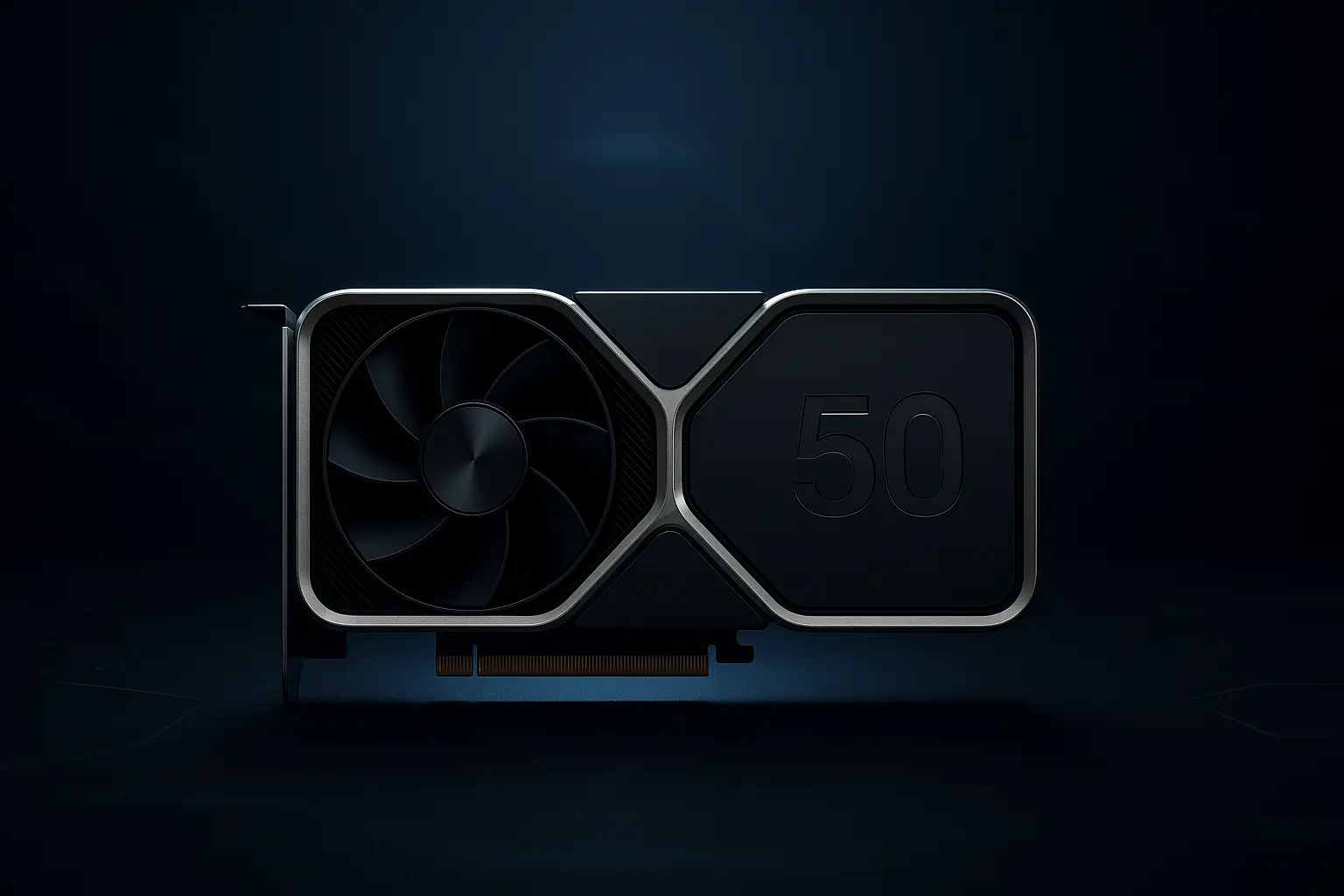The graphics card industry is once again at a turning point, as NVIDIA prepares to unleash its highly anticipated NVIDIA RTX 50 Series. Powered by the brand-new Blackwell architecture and built with GDDR7 memory, this generation promises not just incremental performance boosts, but a fundamental leap in how games, AI, and creative workloads are handled. For gamers, content creators, and professionals, the RTX 50 lineup is set to redefine what “next-gen performance” really means.
The Evolution Towards Blackwell
Since the introduction of the RTX 20 Series with ray tracing, each new generation of NVIDIA GPUs has raised the bar. The RTX 30 Series (Ampere) brought huge gains in rasterization and ray tracing performance, while the RTX 40 Series (Ada Lovelace) focused heavily on efficiency and AI-driven features such as DLSS 3 and Frame Generation.
Now, the RTX 50 Series represents the next leap. Based on the Blackwell GPU architecture, it promises higher performance per watt, advanced ray tracing capabilities, and stronger AI integration for real-time rendering and productivity. NVIDIA itself described Blackwell as a breakthrough for both gaming and AI workloads in its official blog.
GDDR7 Memory: Faster, Wider, Smarter
One of the most significant upgrades in the RTX 50 cards is the move to GDDR7 memory, replacing GDDR6X used in the 40 Series. According to TechRadar and Tom’s Hardware, the shift to GDDR7 delivers:
- Higher bandwidth — up to 32 Gbps per pin, compared to 24 Gbps on GDDR6X.
- Lower latency — resulting in faster texture streaming and smoother gameplay in open-world environments.
- Improved power efficiency — ensuring that even with higher speeds, thermal management remains balanced.
For gamers, this translates into higher frame rates at 4K and 8K resolutions, while creators benefit from smoother workflows in video editing, 3D rendering, and simulation tasks.
AI-Driven Features
NVIDIA’s RTX 50 Series is not just about brute power — it is also about intelligence. With DLSS continuing to evolve, the 50 Series cards are expected to introduce DLSS 4, capable of generating frames with greater accuracy and lower latency. Moreover, AI-assisted denoising, texture generation, and real-time upscaling will likely make the RTX 50 GPUs even more versatile for developers and players alike.
These innovations extend beyond gaming. AI acceleration will help professionals in fields like architecture, engineering, and machine learning research, where GPU power has become a vital resource.
Expected Models and Performance
While NVIDIA has not officially released full specifications, the lineup is expected to include:
- RTX 5090 — the flagship model aimed at enthusiasts, featuring the most powerful Blackwell GPU with 24–32 GB of GDDR7 memory.
- RTX 5080 — a high-end card offering premium 4K gaming performance.
- RTX 5070 / 5070 Ti — the mainstream gaming sweet spot, targeting 1440p and high-refresh 4K gameplay.
- RTX 5060 — an entry-level card designed to deliver next-gen features at a more affordable price point.
Early leaks and performance projections reported by VideoCardz and Wccftech suggest that the RTX 5090 could outperform the RTX 4090 by up to 70% in raw rasterization performance, with even bigger gains in ray tracing and AI-powered tasks.
Competition and Market Impact
The release of the RTX 50 Series will inevitably spark new competition with AMD’s upcoming RDNA 4 GPUs, which are also expected to focus on efficiency and AI features. Analysts at Digital Trends note that this rivalry will drive advancements in ray tracing, AI-enhanced rendering, and power optimization.
For the gaming industry, this new generation of GPUs could accelerate the adoption of 8K gaming, advanced real-time ray tracing, and AI-driven graphics pipelines. For content creators, the improved compute performance could cut rendering times dramatically, while professionals in AI research will see new opportunities for experimentation and deployment.
Release Window and Pricing
Although NVIDIA has not confirmed exact release dates, industry insiders anticipate that the RTX 50 Series will debut in late 2024 or early 2025, starting with the RTX 5090 and RTX 5080. Publications such as PC Gamer suggest pricing will remain premium, reflecting rising semiconductor costs and the inclusion of next-gen components like GDDR7. More affordable options like the RTX 5060, however, are likely to target the mainstream gaming audience.
Conclusion
The NVIDIA RTX 50 Series represents more than just another GPU launch — it signals the start of a new era in graphics technology. With Blackwell architecture, GDDR7 memory, and cutting-edge AI capabilities, these cards will not only enhance gaming but also reshape content creation and AI research.
For gamers, the promise of smoother 8K experiences and real-time cinematic graphics is finally becoming reality. For professionals, the fusion of graphics and AI power will redefine productivity. And for the industry as a whole, the RTX 50 Series marks a clear step into the future of computing.
👉 For more updates on GPUs and the latest innovations, check out our Technology
and News sections.
